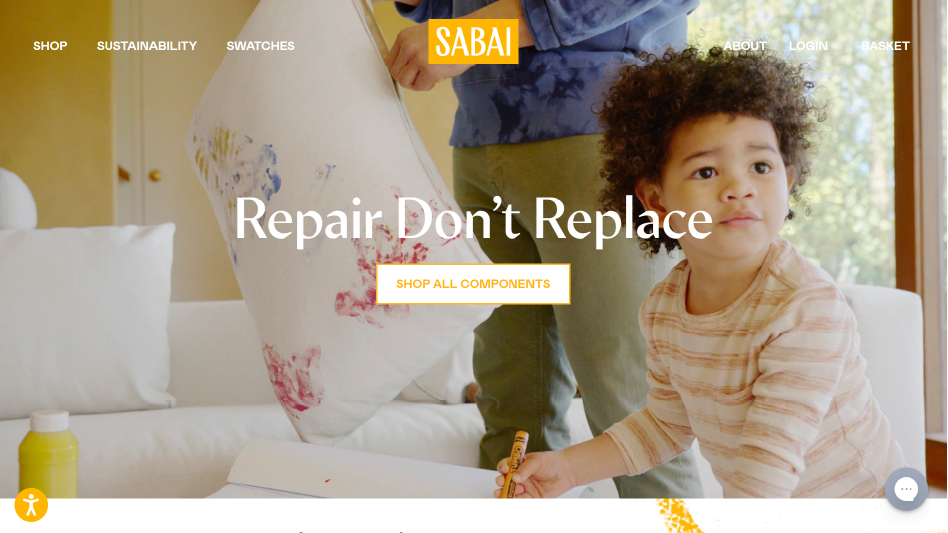Right to Repair and Sustainable Ecommerce
All articlesIt seems like some product lifespans are getting shorter and shorter. Meanwhile we’re seeing people frustrated that they can’t fix their own devices, who instead turn to simply buying new. The proposed solution? Giving all people a Right to Repair. But if this comes into effect, this may drastically change sales models both in-store and online. How might the Right to Repair impact ecommerce?
What is ‘Right to Repair’?
We all know the frustration when technology, white goods, furniture, or anything else you invested money in breaks. And it’s even more frustrating when you have to fork out more money to buy an entirely new product instead of repairing what’s broken – especially when the broken part is often easily fixable or replaceable.
It’s not uncommon knowledge that manufacturers often design their products to wear down faster than they should. All the way back from the lifespan of lightbulbs being made shorter in the 1930’s, planned obsolescence is how many companies have pushed consumers to constantly buy new products. Nowadays, the culprits are often smartphones, white goods, printers, clothing, and kitchenware and tools among other things.
The lack of repairability usually comes down to inner being made inaccessible, with specialist tools needed for access. Other times replacement parts are more expensive than they need to be or simply aren’t available at all. And some manufacturers’ warranties are voided if repairs are attempted by third parties.
Farm equipment manufacturer John Deere have come into fire repeatedly in recent years for continuously failing to make repairs accessible for farmers, with the machines only able to be fixed using software exclusive to authorised dealerships. Many farmers don’t have the time or money for what are often minor, easy-to-fix problems. Some have turned to using hacked software – something that’s now granted a copyright exemption for repairs.
Some organisations are now fighting for the Right to Repair across Europe, the US and Canada, and globally. Right To Repair EU are calling for legislations where manufacturers must make efforts to make repairs accessible where reasonable. Yet many companies are fighting back in fear of losing profits if consumers aren’t buying as many new products.
A Load Of Rubbish
Not only is it frustrating for consumers, who would prefer to not spend money on a whole new product for minor issues, but it’s also a concern for sustainability. We continue to consume more and more goods globally, and manufacturers are constantly pushing for us to purchase. With planned obsolescence and impossible repairs, consumers feel like their only choice is to dispose of old products. In some cases, companies like Amazon are destroying perfectly good products simply to raise competition and drive up prices.
The amount of electronics waste we’re producing is becoming increasingly concerning. In the 5 years leading up to 2019, the amount of e-waste produced grew around 21% with around 53.6 million metric tonnes generated. That’s the equivalent weight of 9x The Great Pyramid of Giza. And as only around 17% ever makes it to recycling facilities, the rest is simply left in landfill. Not only is this bad for the environment; the effects on human health can be catastrophic.
The importance of Right to Repair, especially with electronic goods, is more prominent than ever. And there is hope; some companies have already integrated repairability and longevity into their business model and are seeing a great impact already.
What Does This Mean for Ecommerce?
Some opposition for legislations comes from fear that companies won’t sell as many new products to customers. Other concerns are over the safety of customers attempting their own repairs. There will always be risks of damaging products or ruining them with lower quality parts. While this may be true for companies that wish to continue with status quo, companies that build repairability into their business model can find ways to succeed even with new legislation. In fact, Right to Repair can be a great opportunity.
Selling replacement parts, tools, and repair kits through an ecommerce site makes repairs accessible for your customers. It keeps your customers happy, keeps them shopping with you, and prevents unnecessary waste. As well as selling products, ecommerce sites provide users with guides, instructions, and information on where to get help. If repairs are too complex for users alone, having an easy way for users to send in their items for repair can make it much easier to not simply buy a replacement product.
Your ecommerce site should always aim to guide users to the items or services they’re looking for. In this case, this may look less like simply featuring your best, latest product, and instead focusing on finding out what users need to invigorate, upgrade, and repair what they already own. This doesn’t mean you can’t show new products, but that options for repairs shouldn’t be hidden on your website. This will show your customers that you’re serious about sustainability and about their pockets. It also helps you be ahead of the game when it comes to regulations around the right to repair.
Who’s Getting It Right?
Patagonia

Patagonia are well known for their stance on climate change and ecological preservation. While their products may be more expensive than some others, they’re very high quality and durable. They offer their ‘Ironclad Guarantee’ on all of their products, meaning they will repair items as long as they are able to do so. This is either free or at a reasonable price (depending on the repairs needed). They also offer tutorials for repairs and repair kits, helping customers make their own repairs for convenience as well. And for items that have been loved to the end of their life, Patagonia will take the item back for recycling into new products ensuring that nothing goes into landfill.
Sabai Design

Sabai Design are a sofa manufacturer that offers a limited but beautifully designed range of sofas and chairs. They encourage consumers to invest in their high-quality pieces which are made to order, ensuring there’s never surplus stock. Sabai offers a range of fabric and leg choices, many of which use recycled and sustainable materials. They also sell individual parts like cushions, legs, and covers, so people don’t have to replace the entire sofa. Encouraging second hand-buying and trading in is also an important part of Sabai’s process. They aim to make their statement pieces long lasting and designed to stay in your living room for as long as possible.
Framework

Is Framework the answer to unrepairable, quickly outdated laptops? Built around a modular design with repairability and customisation in mind, even those with basic tech knowledge and experience can easily work with these. On both the DIY and pre-fitted versions of these laptops, users can easily access the internal parts. Users can swap out components that are either damaged or due an upgrade. Framework offer their internal parts in varying designs, storage, power levels and more, as well as other customisable features. They are also looking to offer the latest versions of hardware as time progresses, so customers can upgrade their laptop without replacing everything. They also offer all the tools, guides, and assistance to work on their laptops.
Is It Really Sustainable?
Too often people only associate sustainability with recycling, but by the time a product is being recycled it’s already left a significant footprint. And while recycling prevents loss of materials to landfill, it still requires energy and other materials to turn goods into something new.
Sustainability starts with consumption. Products should ideally be designed to be as wasteless and long lasting as possible, and consumers should be encouraged to only buy what they need. While this seems counterintuitive to businesses who of course want to sell products, making products repairable is one of the ways to find a balance between these two ideas.
Having the Right to Repair goods can ensure people can use goods for longer and hold off from buying entirely new products, while encouraging loyalty to brands who offer repairs, replacement parts, and assistance to keep their products lasting longer. That being said, it can’t fix all of the sustainability issues created in the production process. But, it should be an important step to prevent needless waste and needless consumption of new products when our old ones haven’t been loved through to the end.
Want to find out more about our ecommerce solutions? Click here.
